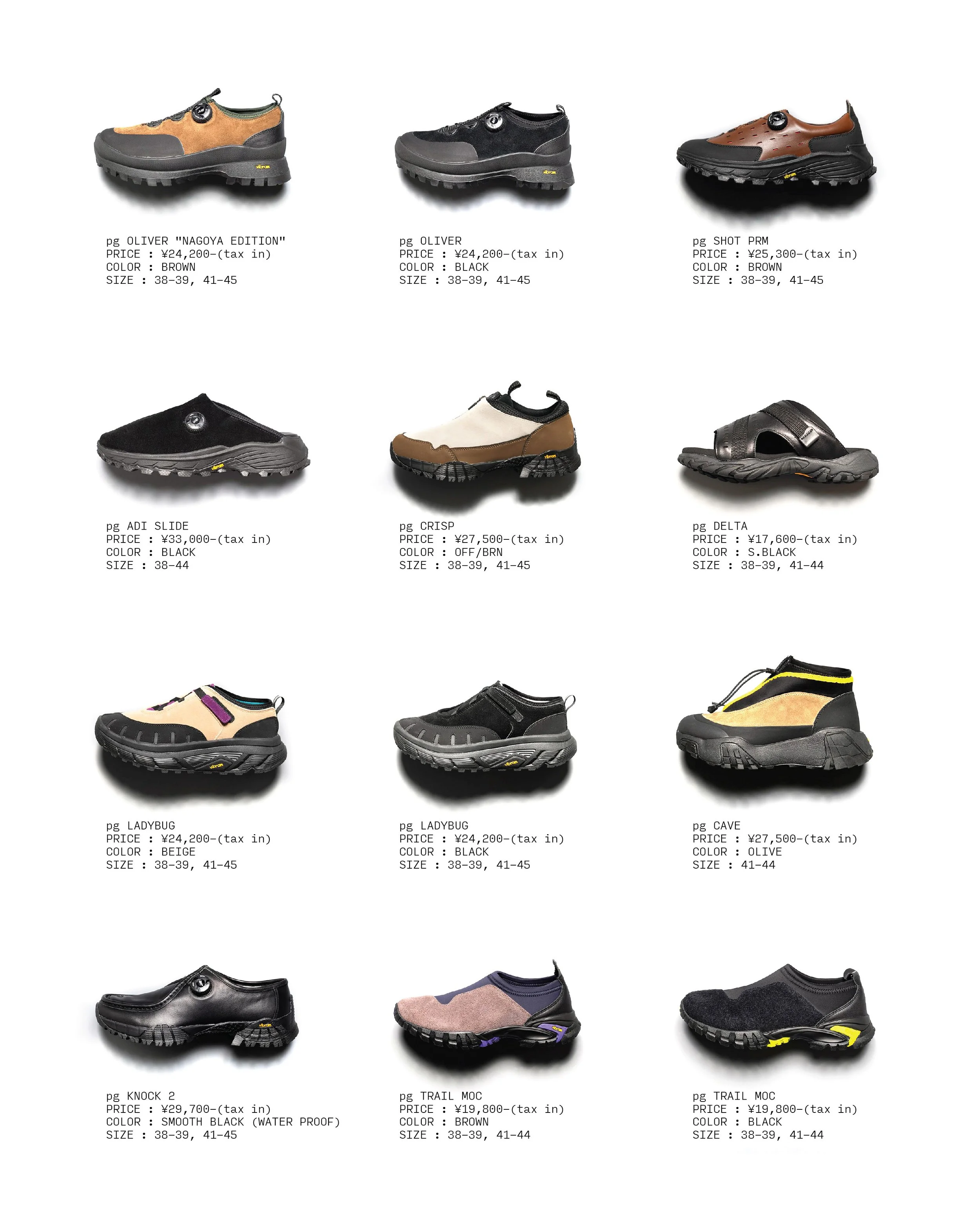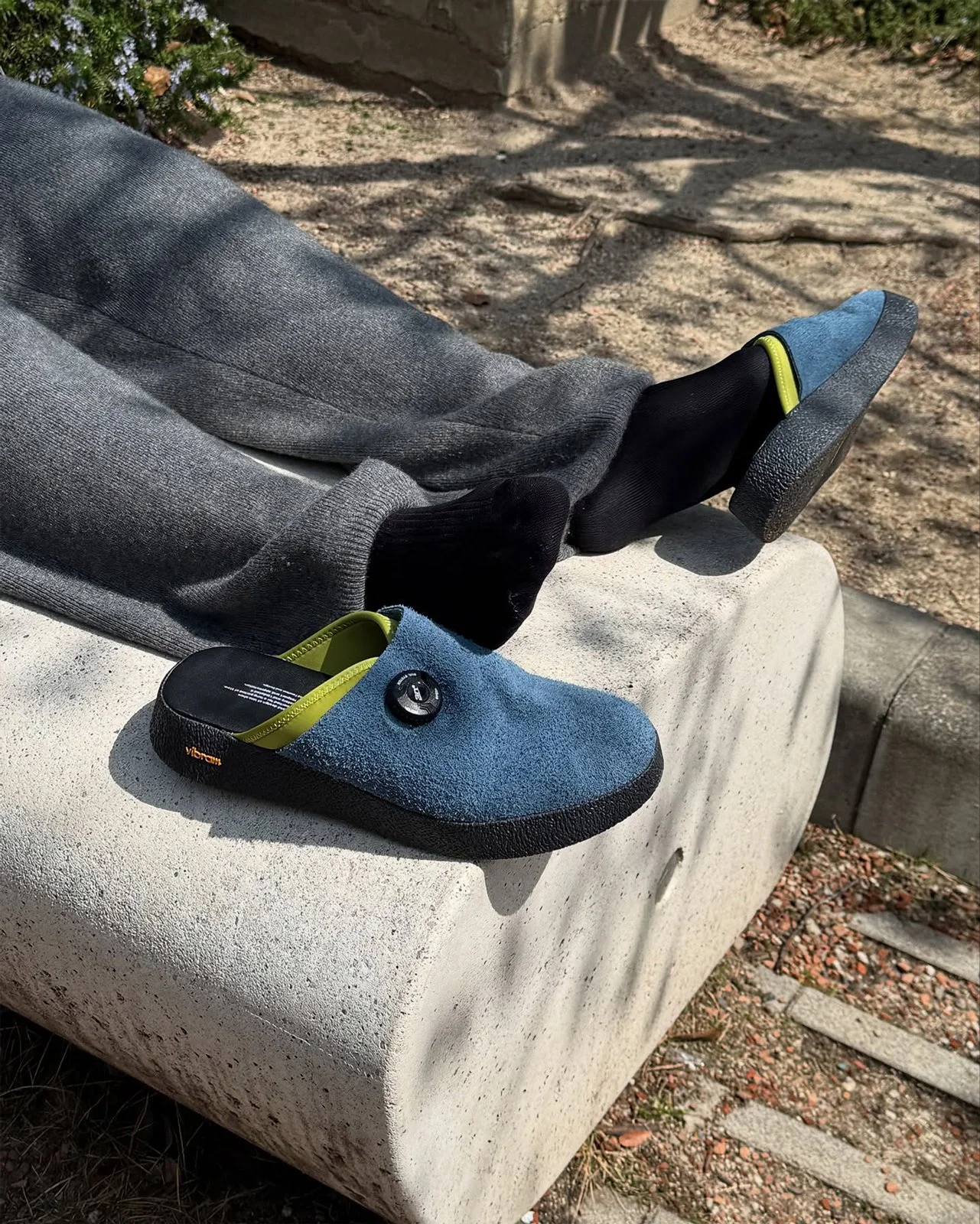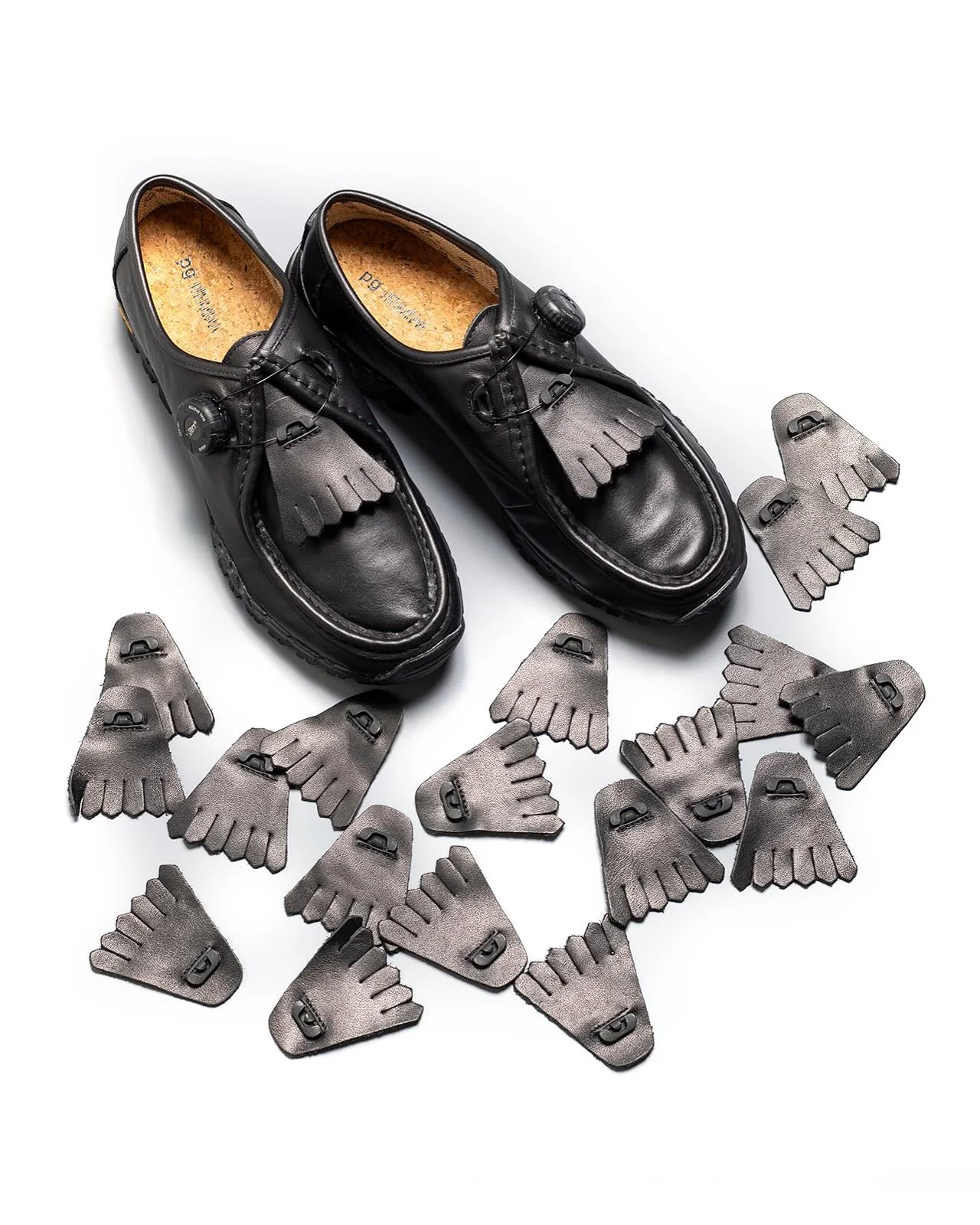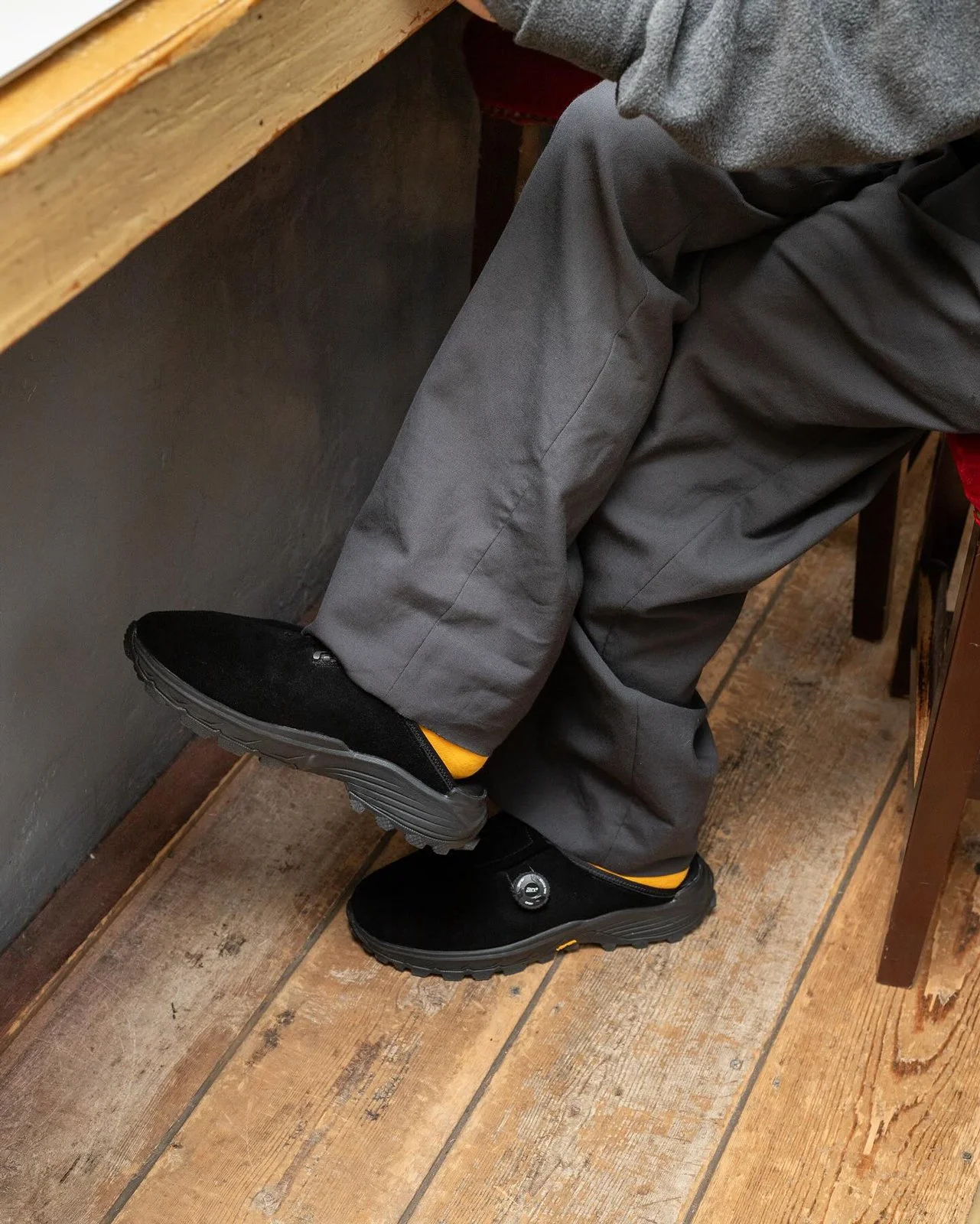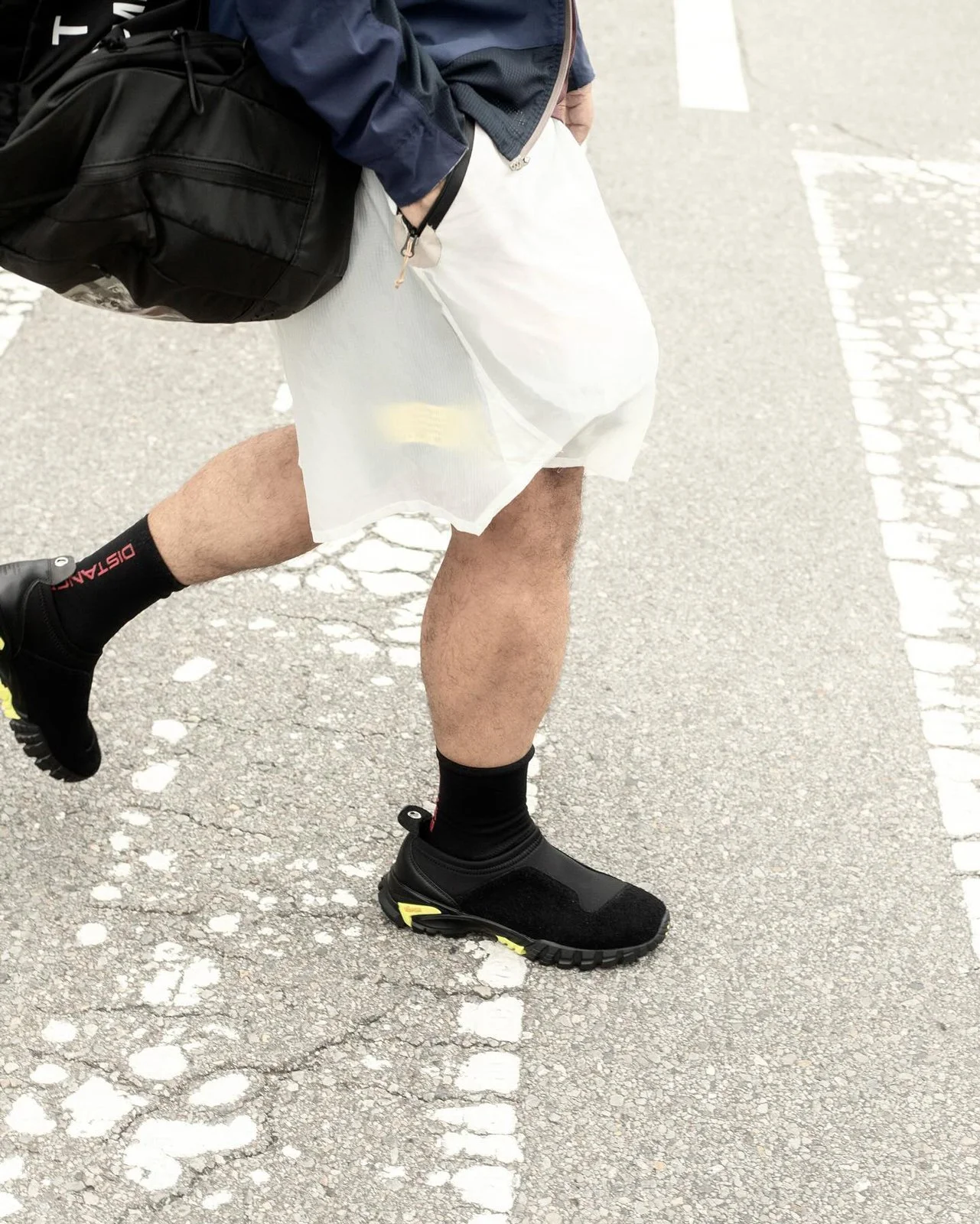Between The Lines 025 : PLAYGROUND
past, present, playground:
ARCHIVING WITH PURPOSE
From afar, we’ve watched PLAYGROUND carve out a distinct space in the footwear world, admiring both their meticulous curation and their sharp, considered approach to design. What sets the Tokyo-based footwear collective apart isn’t just the product they create, but the perspective they bring—one shaped by years of archiving and studying vintage sportswear and utility-based product. This deep understanding of craftsmanship, materiality, and function informs every detail of their in-house line: pg, where heritage techniques are reimagined through a modern, minimalist lens. Yet, PLAYGROUND’s identity extends beyond the shoes themselves. Even their photography—immediately recognizable in a sea of daily sneaker imagery—reflects the same level of thoughtfulness and restraint. There’s no excess, no unnecessary embellishment, just a quiet confidence in design that speaks for itself. Their work isn’t about nostalgia, but about distilling the essence of the past to create something novel, deliberate, and enduring. In a culture fixated on the new, PLAYGROUND demonstrates that looking back with purpose can be just as powerful as pushing forward…
CK : PLAYGROUND has built a distinct identity by reinterpreting existing products while also developing original designs. How did the concept for the pg line come about, and what sets it apart within the PLAYGROUND ecosystem?
PG : As for how the concept of pg was born, we at PLAYGROUND have three main concepts. The first is reuse. Reuse refers to used products, but we aim to reintroduce products that remain timeless and deserve to be re-evaluated. The second is upcycling. The secondhand market is filled with numerous sneakers. Some may feel outdated in design, while others may have deteriorated to the point where they are no longer wearable. By customizing these sneakers, we enhance their value and offer unique custom sneakers that can only be found here. The third is development. When you see, wear, and own a large number of sneakers, you begin to understand certain things. We utilize this knowledge to develop original sneakers that incorporate PLAYGROUND’s unique perspective while respecting traditional designs and functionality. That is what pg is all about.
CK : The pg line embodies a balance of function and minimalism. What are the core design principles behind it, and how do you ensure each model stays true to that vision??
PG : When designing each pg model, there’s one principle that’s always in my mind: rationality. I’m constantly mindful of whether every element serves a meaningful purpose in use rather than simply relying on flashy decoration. In addition, I focus on creating a ‘good incongruity’ —not an unpleasant or jarring one, but a twist that adds a positive spark. Personally, I find that my heart is more stirred by things I haven’t seen before than by the familiar. With that in mind, I strive to design shoes that are both rational and unexpectedly innovative, with an element of pleasant dissonance. Beyond that, I want to remain free, unbound by conventional ideas.
CK : The OLIVER model features a distinctive design language that we’re quite fond of. What inspired its creation, and what specific functions or aesthetics drove the design process?
PG : In 1990s Japan, REDWING and Danner were all the rage. At that time, trendsetting shop staff were sporting Galibier trekking boots in striking blue or red suede. They paired them with Levi’s 501 jeans, a SAINT JAMES striped top, and an ORTEGA vest. It was incredibly cool. Remembering that styling and believing it would also complement modern fashion, we created OLIVER. We updated it to a modern version by incorporating the FREELOCK system, which makes them easier to put on and take off.
CK : Your approach often blends traditional craftsmanship with modern techniques. How does this influence the construction methods used in the pg line?
PG : I don’t give overly strict instructions regarding the construction methods or production processes, as I’m not a craftsman myself. I simply communicate my intentions and leave the techniques largely to the professional craftsmen on the factory side. Thanks to that, I’ve been fortunate to work with outstanding factories, and I’m truly grateful.
CK : What does the development cycle look like for a pg model, from initial concept to production? Are there any specific challenges you’ve faced in bringing these designs to life?
PG : From planning to production, it takes an average of about four months. At present, we haven’t encountered any specific challenges in realizing the design of pg. While ideas are coming in every day, I do have a lingering concern about what might happen if they ever run dry. Nurturing successors is also one of the challenges, I believe
CK : The pg line avoids obvious branding in favor of a more understated aesthetic. What role does this play in the collection’s identity, and how does it challenge industry norms?
PG : Thank you for understanding. That’s exactly right. To put it a bit boldly, I want to compete based on the strength of our products, not just the power of the brand. (Though, to be honest, our brand still has a long way to go…)I want pg to be a shoe brand that makes people ask, ‘Where are those shoes from?’ when they see someone wearing them. At the same time, I want our shoes to seamlessly complement any brand’s clothing. For example, a three-stripe tracksuit might not pair well with Swoosh shoes, but with pg, it would work effortlessly. However, I sometimes envy the 3 stripes and swoosh when I am designing a pg.
CK : Collaborations have played a role in shaping pg’s identity. What do you look for in a partnership, and how do you ensure the integrity of the design remains intact?
PG : We find collaborations most exciting when they involve partners from different industries or those with a sense of unexpected contrast to our own sensibilities. Recently, for example, we created a shoe in collaboration with a Nepalese restaurant. These collaborations help us reach new customers who may not have been familiar with PLAYGROUND or pg before. At the same time, they provide us with new discoveries and learning experiences that we might not have encountered otherwise. When it comes to design, I listen to our partner’s requests and then refine them through the pg filter to create the final design. This approach allows us to maintain pg’s direction while incorporating fresh perspectives.
CK : Looking ahead, what’s next for the pg line? Are there new silhouettes, technologies, or unexpected directions you’re excited to explore?
PG : Yes, of course! As I mentioned earlier, personally, I find more excitement in discovering things I’ve never seen before rather than things I’m already familiar with. I want to continue creating shoes that bring that sense of excitement and wonder. In Japanese, there is a phrase, Onko Chishin (温故知新), which means ‘learning from the past to gain new insights.’ We strive to explore past masterpieces and elevate them into something new. That is the kind of brand we want PG to become. Thank you for your continued support.



